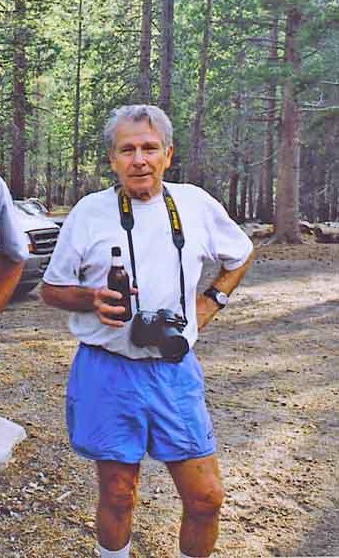Pioneers
I got two emails today that made me feel so proud and amazed by my friends, that I can’t resist sharing them. And they made me reflect on pioneers in the sports I most love, climbing and wingsuit flying. Being a climber with a strong sense of history, I can see that wingsuit flight is now in that golden pioneering age that climbing experienced in the 60s, when innovation and gear advances were changing techniques and possibilities through the global community. It’s an exciting time to be living in.
My friend Geo (in the black wingsuit) is a base jumper from South Africa, but he is studying the physics of wingsuit flight for a PhD in Zurich! I love jumping with him in Lauterbrunnen, because he is not only polite and gracious, but also so darn smart. And knows how to fly his V3 😉
Geo sent me this link to an article he wrote about his research. He was happy they used a picture of the two of us jumping. I’m proud of him! And I found his article fascinating as well….you can read it by going to the link, but here is the introduction:
“A wingsuit may be defined as a wearable suit constructed from a suitable fabric that is flexible, intimately connected to the body, and designed to maximise either the wearer’s freefall time or glide ratio. They offer humans the unprecedented opportunity to experience flight in much the same way a bird must do.
A good wingsuit flyer wearing a modern wingsuit can achieve a steady state glide ratio of around 2.5:1. But are they really flying, or just “falling sideways”, as some unfamiliar with them have suggested?
Rephrasing the question into a more technical one – are the equations that describe aircraft and bird flight also applicable to wingsuits?”

The other email I got was from Don Lauria, a legendary climber and yet another engineer/smartypants who has helped with the Layton Kor fundraiser. He climbed with Layton back in the 60’s, and this tale he wrote of climbing the third ascent of the Leaning Tower in Yosemite with Layton, back in the day, is a true classic. He graciously offered it as a guest blog post at laytonkorclimbing.com. You’ll want to read the whole thing, but here’s a bit that’s pure gold:
“Layton climbed quickly and was up to the belay bolts – he was breathing hard when he called down “Off belay.” I’m sure his respiration rate was due more to his conversation than to his exertion. The Robbins Jumar hauling system was not in our repertoire, so we hauled our food and gear by the old fashioned way – hand-over-hand.
My expertise with Jumaring was elementary at best and it took me longer to second the pitch than Layton took to lead it. When I finally arrived at his position he was already getting anxious and quickly put me on belay and urged me upward. About a third of the way up my pitch I clipped a bolt and in the process it came out in my hand. I thought, Whoa, now what? Layton was getting nervous, “Pound it back in, Lauria.” I tried, but it still just fell out when I tried to clip it. “It won’t go, Layton.”
Kor was reaching the red line on his patience meter. He had the extra bolts, but rather than send them up to me he suggested I come down and let him finish the pitch. With great relief, I descended and he took over the lead, replaced the bolt with a new one, and with minimal expletives raced on.”
Those guys had some fantastic adventures!
As a climber of this generation, I feel fortunate to be part of a sport in which many of the pioneers are still climbing and continuing to inspire.








Hi Steph,
I’ve been watching the World Cup ski jumping competition which turned out to be very exciting. http://english.cctv.com/program/sportsscene/20091221/103107.shtml I’m interested in the air techniques and how this relates to wingsuit flying and base jumping. Have you discussed this sort of thing with your wingsuit friends or seen any studies relating the two disciplines? In ski jumping, or ski flying which produces longer distances, they are milking every bit of lift they can from the air in a relatively short time. I love reading your blog. Have a great Cristmas .)
John
It’s so interesting you said this John, because I always look at those ski jumpers, and see that they are in a perfect track position. I think that if they went through sky diving training, they could use skydiving to perfect that body position. And I keep wondering why someone doesn’t do that, because it would be pretty amazing.
Hello,
Thanks for sharing the information about a BASE jumper who is pursuing a PhD. It is nice to know that there are other PhD candidates out there who are pursuing extreme sports — and that my predecessors and I are not odd ones out for pursuing skateboarding, snowboarding, rock climbing, and skiing (though we are all amateurs).
Speaking of BASE jumping, wingsuiting, and skiing, I have seen a video where a person goes ski flying with a wingsuit:
http://www.youtube.com/watch?v=tZizIbSpI-g
Now, I was wondering (since the Nordic skis are heels free) if these skis can safely be worn without having to worry about a parachute getting entangled in them during deployment. If such a deployment is, at all, possible, then maybe wingsuiters can wear a BASE rig and use Nordic skis to practice jumping from higher and higher, refining their techniques and their equipment, so that one day they may be able to land their wingsuits on skis, rather than by parachute.
Just a thought.
Faissal
P.S. Is there a way to track your blog from my Blogspot account? Thanks.